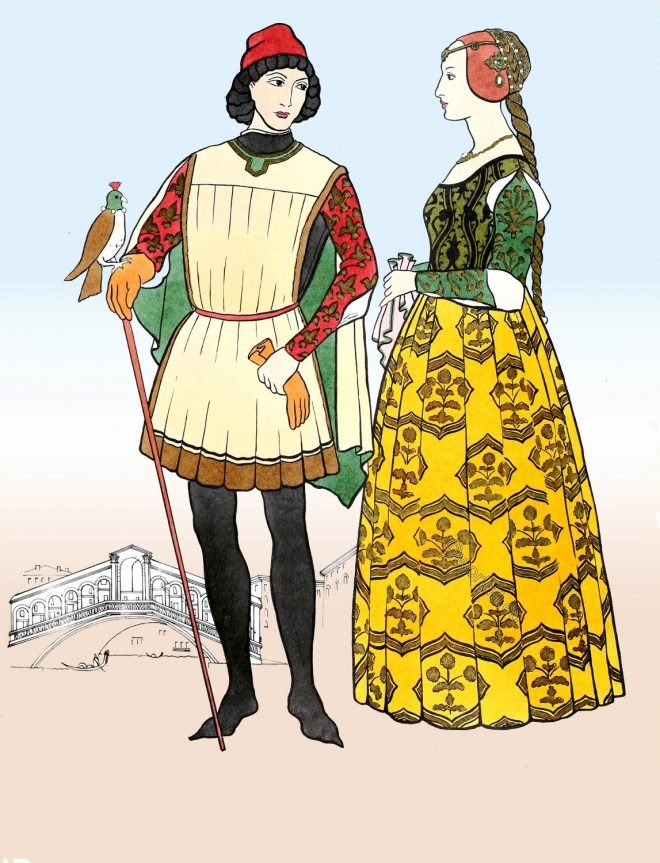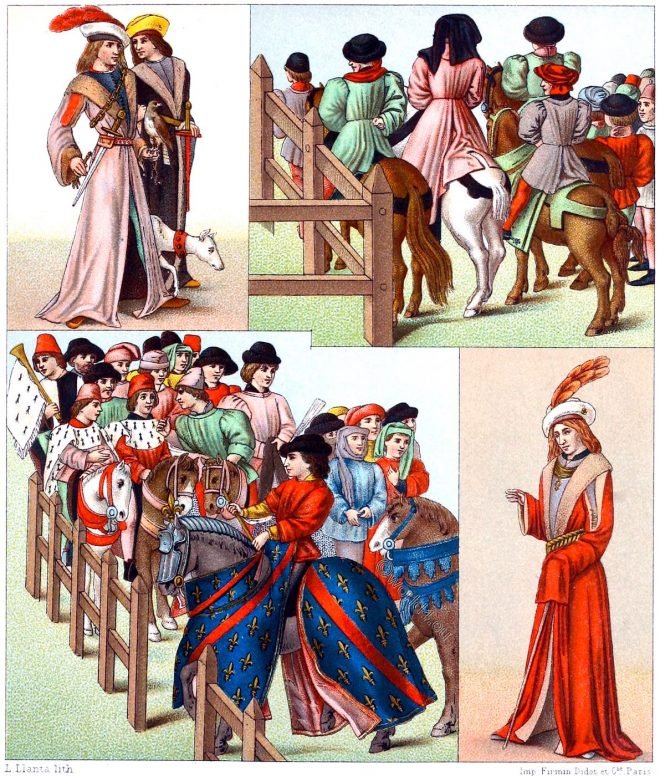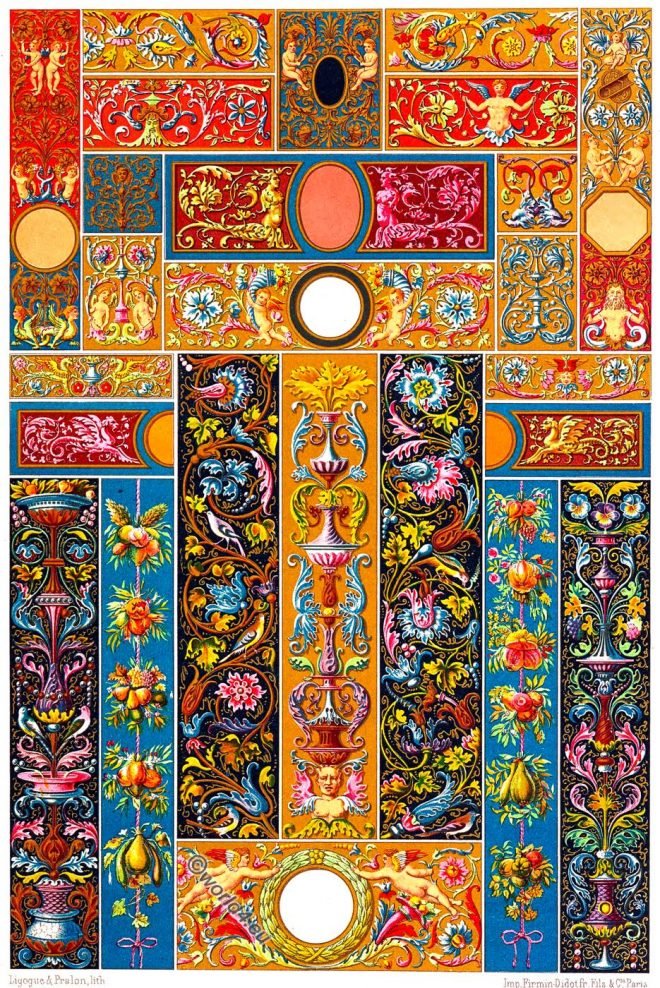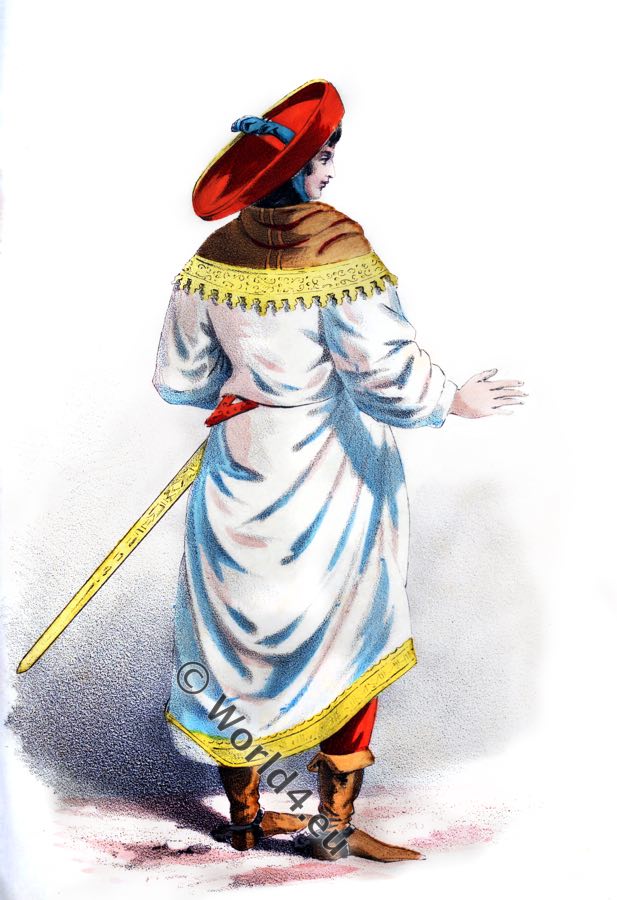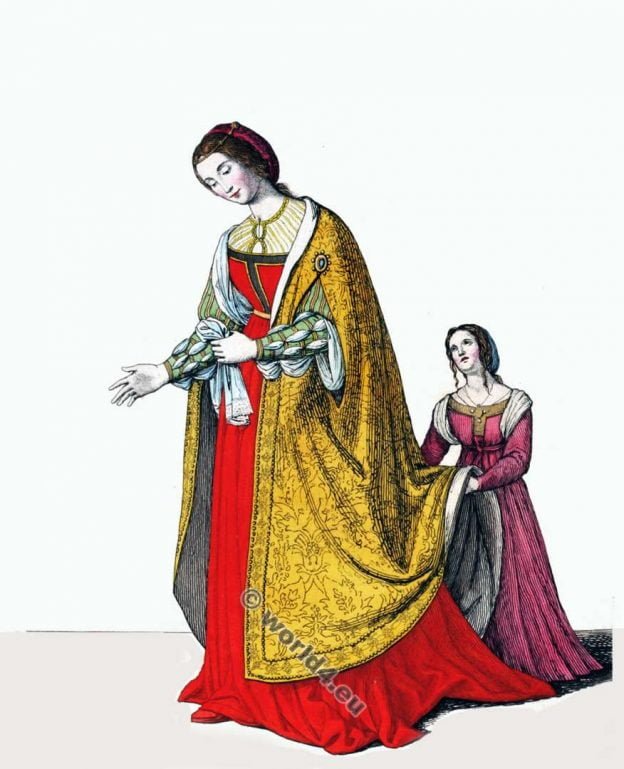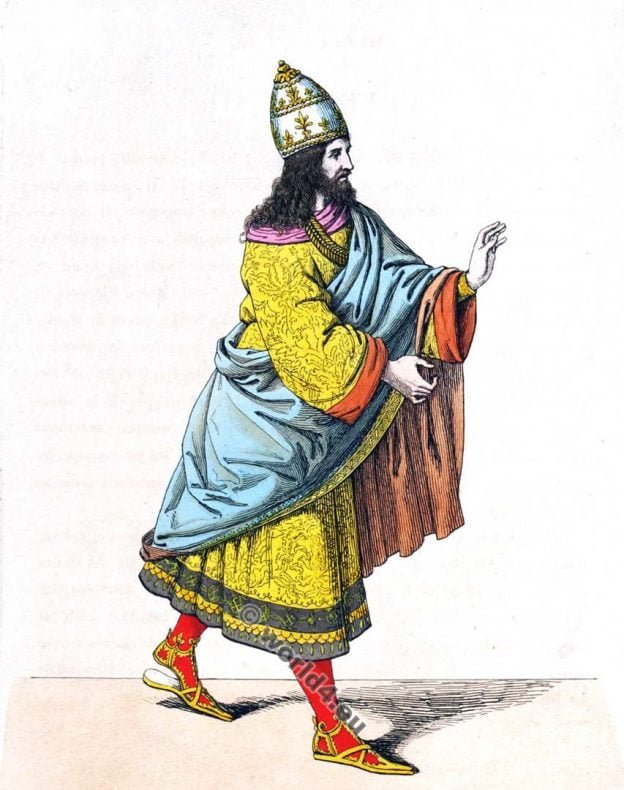The mi-parti, the wide bag sleeves, like the long jagged or cogged surplices are repeated here in the most varied applications and changes.
Category: 1450
Costumes in 1450. Fashion of the 15th Century. Renaissance, late Gothic, Burgundy fashion.
Italy 15th century. Typical Italian Renaissance woman’s ensemble.
Italy 15th century. Fashion from 1400 to 1500. Typical Italian Renaissance woman’s ensemble. The Cotehardie and houppelande.
The challenger of the tournament. Noblemen of the court of Charles VIII.
Medium Age. France. The challenger of the tournament. Noblemen of the court of Charles VIII. Entering the barriers to taking the oath. Noblemen of the court of Charles VIII.
Renaissance Paintings On Manuscripts and Frescoes.
THE subjects represented in this plate belong to the finest period of the Renaissance, when the art of the Italian miniature-painters had attained its highest pitch of perfection.
Italian princes, herald and squires in the fashion of the 15th century.
Italian princes in the fashion of the 15th century. Italian noblemen, heralds and squires in the fashion of Mi-Parti. Garments with coloured lobes, saddles and bells. Crakow shoes also known as poulaines or pikes.
A German noble costume in the 15th century.
A GERMAN NOBLE COSTUME.
Proclamation of a tournament in the ages of chivalry.
PROCLAMATION OF A TOURNAMENT.
Eleanor of Portugal. Empress of the Holy Roman Empire.
Historical costumes designed and engraved by Paul Mercuri
Frederick III. Emperor of the Holy Roman Empire.
Friedrich III. 1415 -1493, from the house of Habsburg was from 1440 Roman-German king and from 1452 Emperor of the Holy Roman Empire.
Parisian printing house. 15th Century.
Parisian printing house. 15th Century. According to Roigny-Jehan, bookseller-printer in Paris. (Sylvestre, Typographical marks, Carnavalet, vol. 2.)


